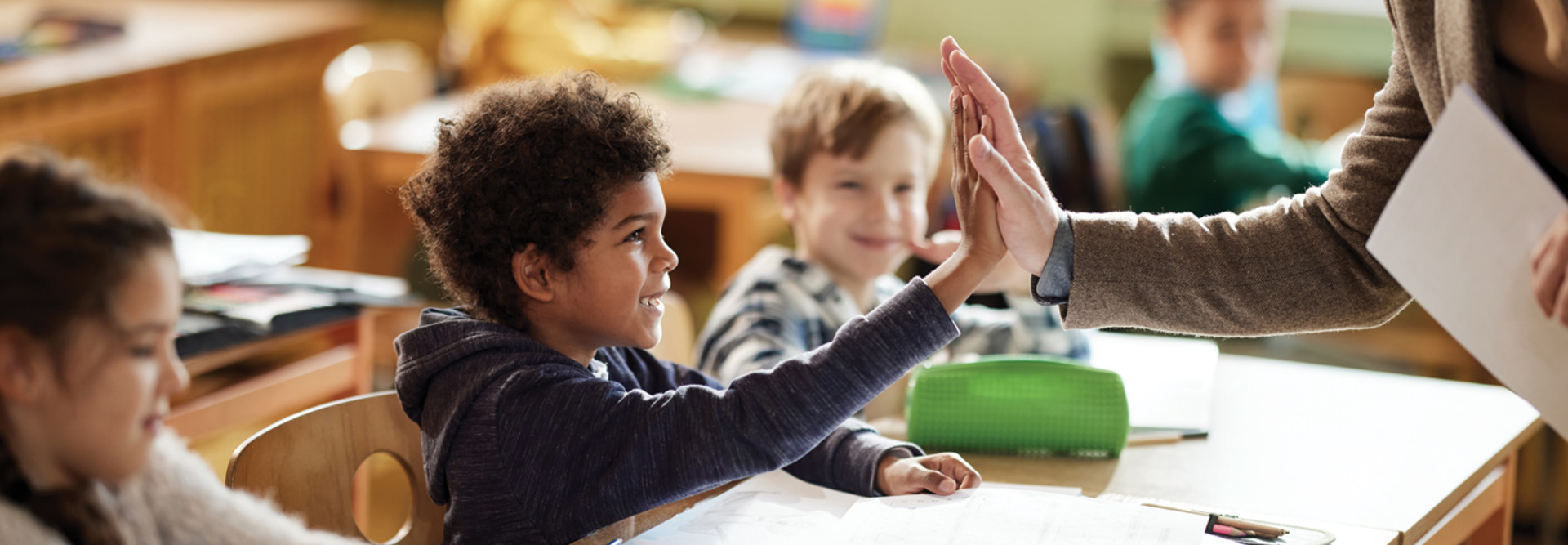Every year, I work to expose students to a plethora of ideas and encourage them to keep what works best for them. Here are some ways I identify students who are struggling and some of the tips I share with them.
Identify Students Who Are Struggling
My students start their school days with a daily check-in. These are filled out on a Google Form with one or two academic review questions, plus a prompt: “How are you feeling today?”
This can help identify kids who are struggling on a given day. But more importantly, it can draw out students who are struggling for an extended period of time. For example, I would pay closer attention to a student who typically indicates they are happy every day but suddenly starts marking that they are sad multiple days in a row.
DIVE DEEPER: Tech tools support schools’ mental health efforts.
For schools that don’t use Google Workspace for Education, there are alternate options. Microsoft released a tool called Microsoft Reflect that has a built-in daily check-in function and can be embedded into Microsoft Teams. when students need a calm moment, the Reflect website also has meditation, movement and play activities.
Classroom Activities and Tech to Support Student Mental Health
Breathing Exercises
I introduce various breathing exercises to my students early each year to help them in the moments when they are frustrated, anxious or need to calm themselves before accomplishing a task. Even my most reluctant participants agree to try the exercises when they find out groups like the U.S. Navy SEALs use these breathing exercises to focus.
One of the most effective exercises is called box breathing, where the students breathe in for four counts, hold their breath for four counts, breathe out for four counts and hold their breath again for four counts. To help students visualize this method, I put a GIF of box breathing on the board.
There are plenty of websites with GIFs to help visualize different breathing strategies.
Music
It can help students to have something calming to listen to as they settle their thoughts. I like to give my students a variety of calming options, and I find great material on YouTube. Some of students’ favorites include:
Apps
The Calm app, which is also available online, provides guided meditation videos as well as soothing stories and music.
Another app, one of my daughter’s favorites for reflection and self-care, is called Finch. In this app, users get their own cartoon bird and, to care for the bird, they must complete daily tasks and challenges. These tasks are customizable, from taking a calming walk to reading. Completed tasks translate to rewards for the bird.
Apps like Finch add external motivation to tasks students may not complete on their own.
Kinetic and Sensory Activities
Some students need tactile motion to release nervous energy and give them something to do when they are feeling anxious.
One strategy is teaching students how to sign the numbers one through 10 in American Sign Language. It is a small gesture they can do without drawing attention, but it gives them something to focus on and involves movement to get the jitters out.
MORE ON EDTECH: Flexible furniture improves teacher and student collaboration.
I also teach students a 5-4-3-2-1 grounding strategy. They identify five things they can see, four things they can touch, three things they can hear, two things they can smell and one thing they can taste around them. It grounds them in the moment and allows them to focus on the next step instead of all of the big thoughts and feelings within them.
Every student faces different challenges, and one strategy isn’t perfect for everyone. The goal is to give students a range of approaches to try when life gets difficult.











